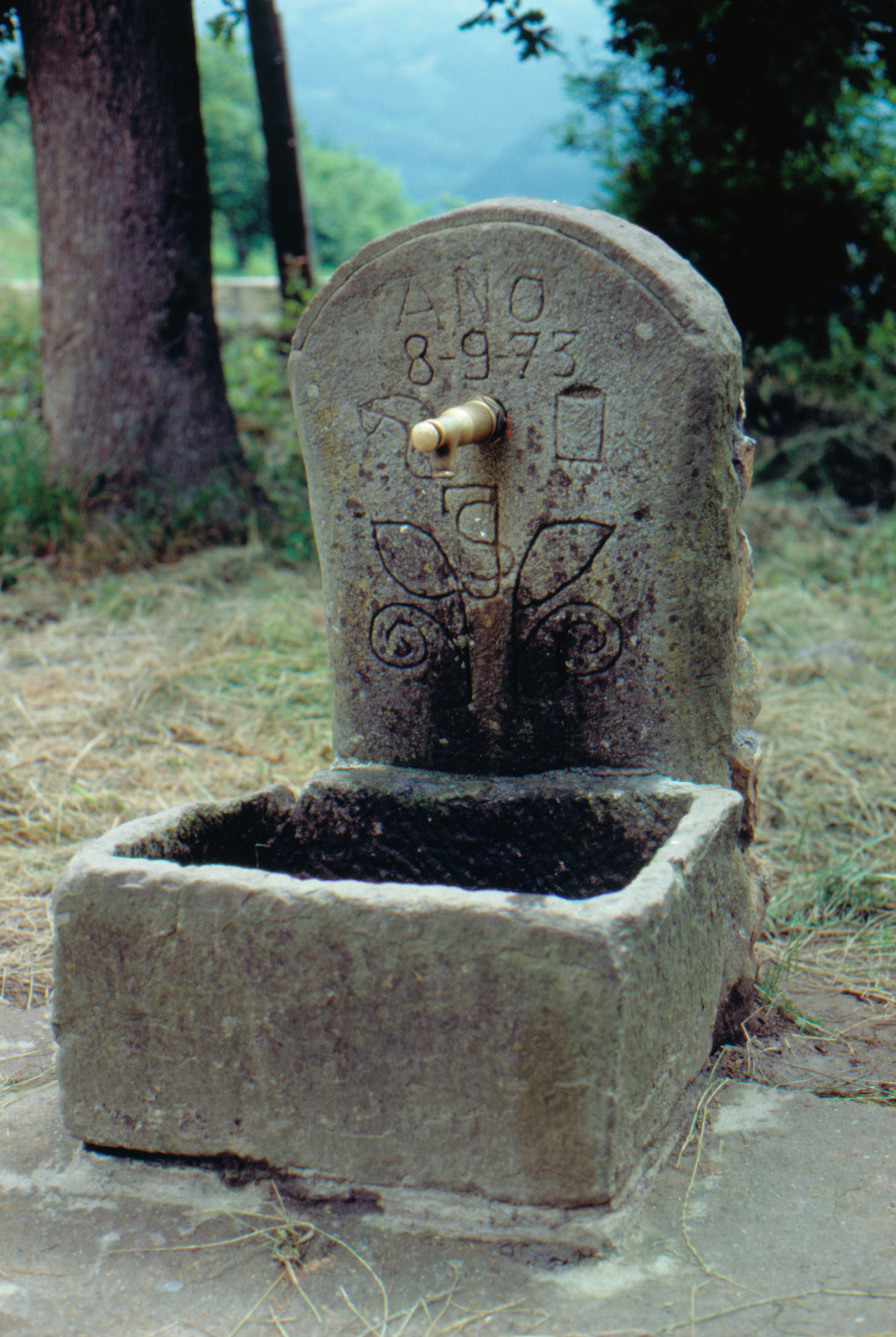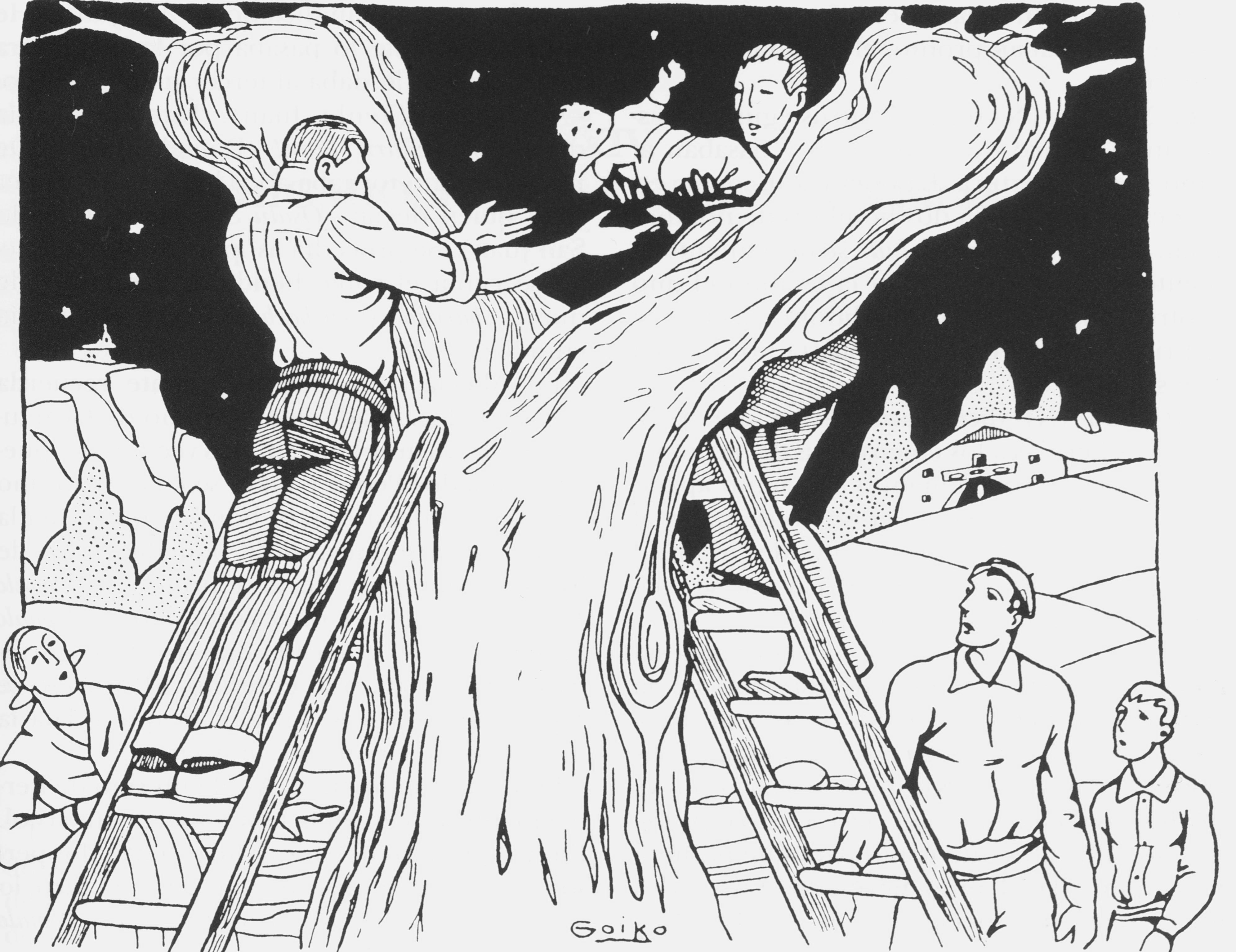Archives

Parhelion. Josu Larrinaga Zugadi.
The eve and the feast day of St John (24 June) are well known to encompass a large amalgam of symbolic rituals associated to earth (people, animals, harvests and protective vegetables), water (beliefs about cleansing, regeneration and healing), air (magic moment for purging from nocturnal and malignant beings) or fire (purifying or renewing element). As regards the latter, we are familiar with the custom of climbing certain highlands in the early hours of St John’s Day to observe the dance performed by the king star or dancing sun (optical effect of the scientifically so-called sun dog, parhelion or fake sun). (more…)

Fountain next to St John’s hermitage in Garai (Bizkaia), seat of the brotherhood of Momoitio. José Ignacio García Muñoz. Labayru Fundazioa Photographic Archive.
Many of the popular beliefs and rites surrounding St John’s Day (Doniane, in Basque) on 24 June are reminiscent of ancient summer solstice celebrations and cults.
Above and beyond the traditional bonfires still lit at dusk on the eve, back in the days when society lived in closer contact with nature, other elements of our environment acquired on the day a new healthy vigour. So it was with the water from sources and rivers, the morning dew, the trees, the grasses and the flowers. (more…)

Hernia repair rite on St John’s Night. Taken from: R.M Azkue. Euskalerriaren Yakintza, I. Madrid, 1947.
Many beliefs and rituals around the Feast of St John the Baptist which persist to this day are reminiscent of ancient celebrations of the summer solstice. They make up a variegated set of myths, symbols and practices regarding, along with others, fresh water springs, the morning dew, baths in the sea, flowers and herbs, bonfires and special trees. (more…)

